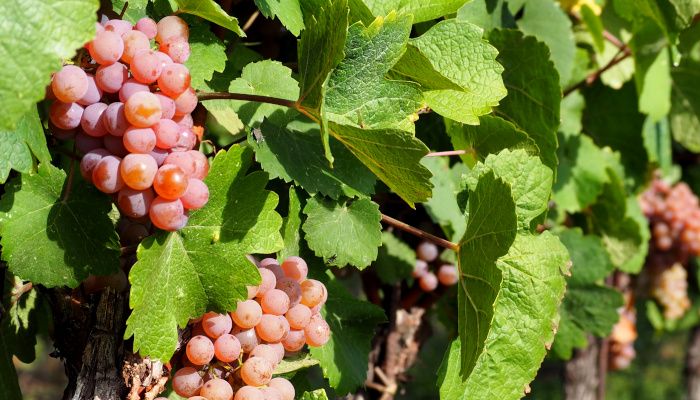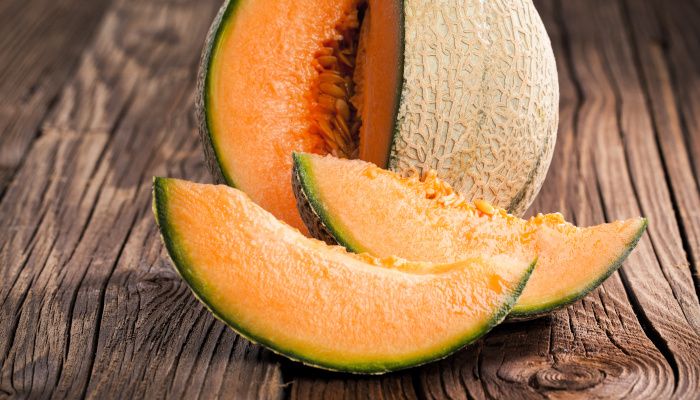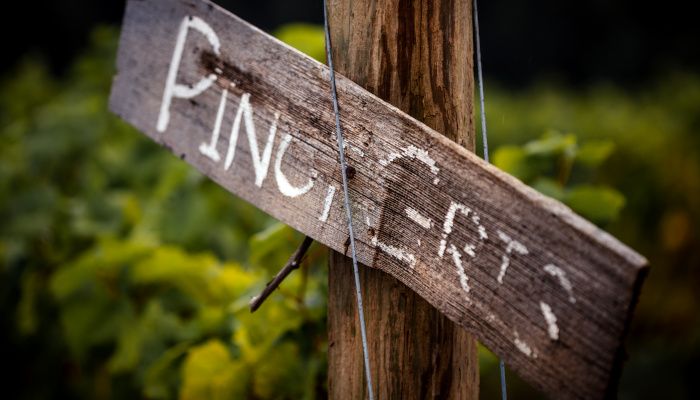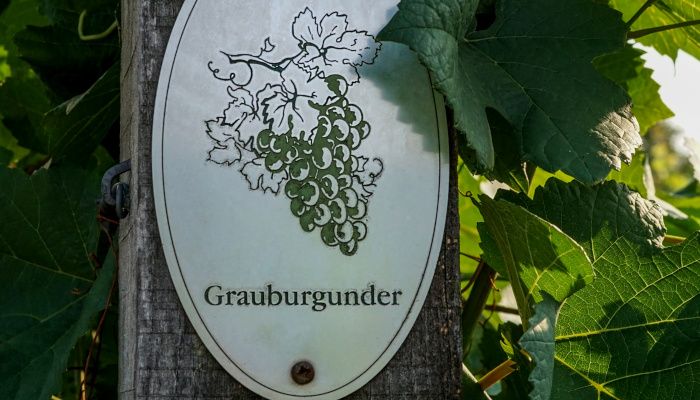Pinot Gris: Everything You Need to Know About This Grape and Its Wines
Italy, Germany and Alsace produce great pinot gris wines, but they are not the only ones. Under different names such as pinot grigio or grauer burgunder, this mutation of pinot noir gives rise to seductive white wines and some rosés in many other countries such as New Zealand, Slovenia, Argentina or Canada.

The pinot gris grape
The pinot gris grapevine gives generally small clusters and berries, although there are different clones. The larger ones are the most common clones, while the smaller ones are the ones that produce the highest quality wines.
It is a rather vigorous plant, it buds and ripens early and is not very productive. It offers musts of high potential alcoholic strength and medium acidity. It is sensitive to mildew and is easily affected by Botrytis Cinerea, giving rise to interesting botrytis wines.

What is a pinot gris wine like?
The best pinot gris wines are full-bodied and honeyed, especially the sweet ones. They are always spicy wines, often mineral and with fine woody aromas, sometimes even exotic. It is also common to find white fruits such as lemon or ripe melon, almonds and flowers among their fragrances, as well as smoky, vegetal and syrupy hints.
Synonyms
Pinot beurot or burot (Burgundy), malvoisie (Loire, Savoie and Valais), pinot grigio (Italy), Grauburgunder, Grauer Burgunder and Ruländer when sweet (Germany and Austria) and Szürkebarát in Hungary.
Why is pinot gris such a popular grape?
- It withstands intense heat as well as harsh cold.
- It can produce both dry and sweet wines.
- It shows very different profiles depending on the characteristics of the terroir.
From pinot noir to pinot gris
It seems that the first mutations of pinot noir in which a loss of colour in the berries was observed occurred at different times in Burgundy and also in various German regions. Today, depending on the climate of each region, the pinot gris grape can vary in shade from pink to a shade quite close to that of its parent, pinot noir.

Pinot gris wines in Alsace
Pinot gris is the third most widely planted grape in Alsace, after Riesling and Gewürztraminer, and it continues to grow. Until 2007 it was known in the region as Tokay d'Alsace, until an agreement between the EEC and Hungary came into force, aiming to protect the great sweet botrytis wines in that country. Wines labelled as Alsace Pinot Gris must be 100% made with this variety.
In Alsace we can find from dry wines to intensely sweet wines, always appetising, thanks to the dry autumns that allow late harvests (vendanges tardives). Among their perfumes we find ripe apricots and smoke, even butter biscuits, cinnamon or honey when they are aged in the bottle. Other aromas such as lemon, clove or ginger can also appear in Alsatian pinot gris glasses.

The wines of grauer burgunder in Germany
Pinot gris is known as Grauburgunder or Grauer Burgunder in Germany and is the fourth most cultivated white grape in the country. Its production is especially concentrated in Pfalz, Baden and Rheinhessen. German Pinot Gris wines need a minimum potential alcohol content of 12.5% to be balanced, as well as limited yields if they are to show their full personality. They can be unctuous, but always less than their Alsatian counterparts. The most mineral soils offer the best versions.

Pinot Grigio wines in Italy
In the north of Italy, in regions such as Lombardy, Veneto, Friuli or Trentino-Alto Adige, some of the best Italian pinot grigio wines are produced. They are particularly elegant in appellations such as DOC Collio, on which slopes, close to the Slovenian border, the variety feels particularly at home.
It enjoys great popularity both in Italy itself and in terms of export (United States), for its fresh and friendly character, wrapped in aromas of lime, green apple, almonds and nectarines.
It is possible to find wines with weight and a marked terroir character when they come from the best winemakers in the country, although in general, they are more fluid and fresh than in Alsace.
It also participates in the production of sparkling wines in Lombardy.

Pairing
Pinot gris wines work especially well with white meats and seafood, particularly with dishes that include citrus or stone fruits such as peaches or apricots, which are common aromas in pinot gris wines.

Its full body and a markedly sweet undertone create wonderful contrasts with slightly spicy food and dishes with a certain bitterness such as some vegetables, whether fresh or grilled.
The more delicate examples are perfect accompaniments to white fish, even raw, or light meals such as salads. Mussels with chips or can be original pairings to surprise even the most experienced wine taster.
Some essential Pinot Gris wines, by region
Alsacia
- Trimbach Pinot Gris Vendanges Tardives
- Zind Humbrecht Pinot Gris Clos Saint Urbain
- Josmeyer Grand Cru Hengst Pinot Gris
- Léon Beyer Pinot Gris Comtes d'Éguisheim
Italia
- Foradori Fuoripista Pinot Grigio
- Vie di Romans Pinot Grigio Dessimis
- Schiopetto Collio Pinot Grigio
- Livio Felluga Pinot Grigio
Alemania
Resto del mundo
- Lurton Piedra Negra Pinot Gris (Argentina)
- Simcic Pinot Grigio (Eslovenia)
You May Be Also Interested in
- White Wine Basics
- 10 Galician whites ideally priced for all budgets
- Piedmontese white wines
- Godello, fresh white wines
- Italian white wines: the magnificent six!
- Italian whites, naturally summery
- Riesling: all you need to know about this grape and its wines
- The godello grape: everything you need to know about this variety and its wines